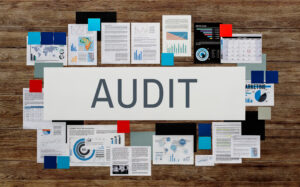The Role of Risk Management in IATF 16949 Requirements - Article 3
Course Name: IATF 16949 Requirements
SEO Keyword: IATF 16949 Requirements
Introduction
Risk management is a cornerstone of the IATF 16949 standard, emphasizing the need for proactive identification, evaluation, and mitigation of risks throughout the automotive supply chain. This approach enables organizations to minimize potential disruptions, enhance operational efficiency, and maintain compliance with quality standards. In this article, we explore the importance of risk management in IATF 16949, outlining the steps involved and its benefits for automotive organizations.
Table of Contents
- What is Risk Management in IATF 16949?
- Key Risk Areas Addressed by IATF 16949
- Steps for Implementing Risk Management in IATF 16949
- Benefits of Risk Management in IATF 16949
- Conclusion
- Frequently Asked Questions
What is Risk Management in IATF 16949?
Risk management in IATF 16949 refers to the systematic approach to identifying, assessing, and mitigating risks that may impact an organization’s quality management system (QMS) or its ability to meet customer requirements. The standard requires organizations to adopt a risk-based thinking mindset, integrating risk management into all processes and decision-making activities. This ensures that potential threats are addressed proactively, reducing the likelihood of defects, delays, and non-conformances.
Key Risk Areas Addressed by IATF 16949
The IATF 16949 standard encompasses a wide range of risk areas critical to the automotive industry. These include:
- Product Design and Development: Ensuring that products meet safety and performance standards while minimizing the risk of defects.
- Supply Chain Management: Addressing risks associated with supplier quality, delivery delays, and material shortages.
- Production Processes: Identifying potential risks in manufacturing processes that could lead to non-conformances or inefficiencies.
- Regulatory Compliance: Mitigating risks related to non-compliance with legal and regulatory requirements in different markets.
Steps for Implementing Risk Management in IATF 16949
Effective risk management requires a structured approach to identifying and addressing potential threats. Key steps include:
- Step 1: Risk Identification: Identify potential risks across all areas of the organization, including product design, production, supply chain, and customer interactions.
- Step 2: Risk Assessment: Evaluate the likelihood and impact of each identified risk. Use tools such as Failure Mode and Effects Analysis (FMEA) to prioritize risks based on their severity and probability.
- Step 3: Risk Mitigation: Develop and implement strategies to address high-priority risks, such as process improvements, supplier development programs, or enhanced quality controls.
- Step 4: Monitoring and Review: Continuously monitor the effectiveness of risk mitigation measures and update risk assessments as needed to reflect changes in operations or the external environment.
Benefits of Risk Management in IATF 16949
Integrating risk management into the QMS offers several benefits for organizations striving to meet IATF 16949 requirements:
- Improved Product Quality: By addressing potential risks in design and production processes, organizations can deliver high-quality products that meet customer expectations.
- Enhanced Customer Confidence: Proactive risk management demonstrates a commitment to quality and reliability, strengthening customer trust and loyalty.
- Reduced Operational Disruptions: Identifying and mitigating risks helps organizations avoid production delays, supply chain disruptions, and costly recalls.
- Regulatory Compliance: Effective risk management ensures compliance with industry regulations, reducing the likelihood of fines or legal penalties.
Conclusion
Risk management is an integral component of IATF 16949, enabling organizations to anticipate and address potential threats to their quality management systems. By adopting a risk-based thinking approach and implementing robust risk management processes, automotive organizations can enhance their operational efficiency, improve product quality, and achieve long-term success in a competitive market.
Frequently Asked Questions
- What tools can be used for risk assessment in IATF 16949?
Common tools include Failure Mode and Effects Analysis (FMEA), root cause analysis, and SWOT analysis. - How does risk management benefit the automotive supply chain?
Risk management helps identify and mitigate potential disruptions, ensuring timely delivery of high-quality products and maintaining strong relationships with suppliers and customers.
Contact Us for More Information
For further details about the IATF 16949 Requirements certification and training, visit our IATF 16949 Requirements page, our IATF 16949 Consultants page, or register for the IATF 16949 Requirements course on our website. You can also contact us for more information.



